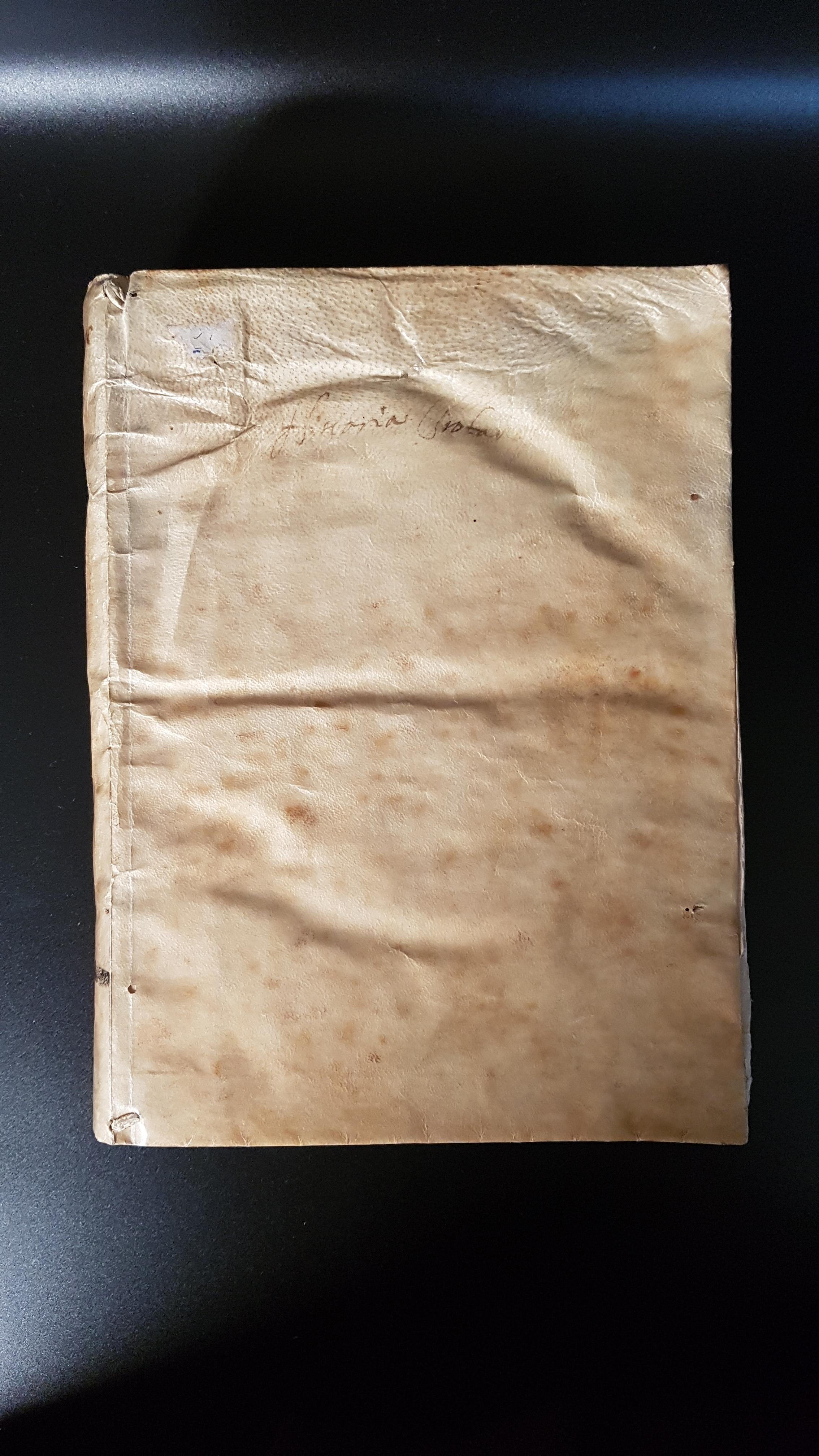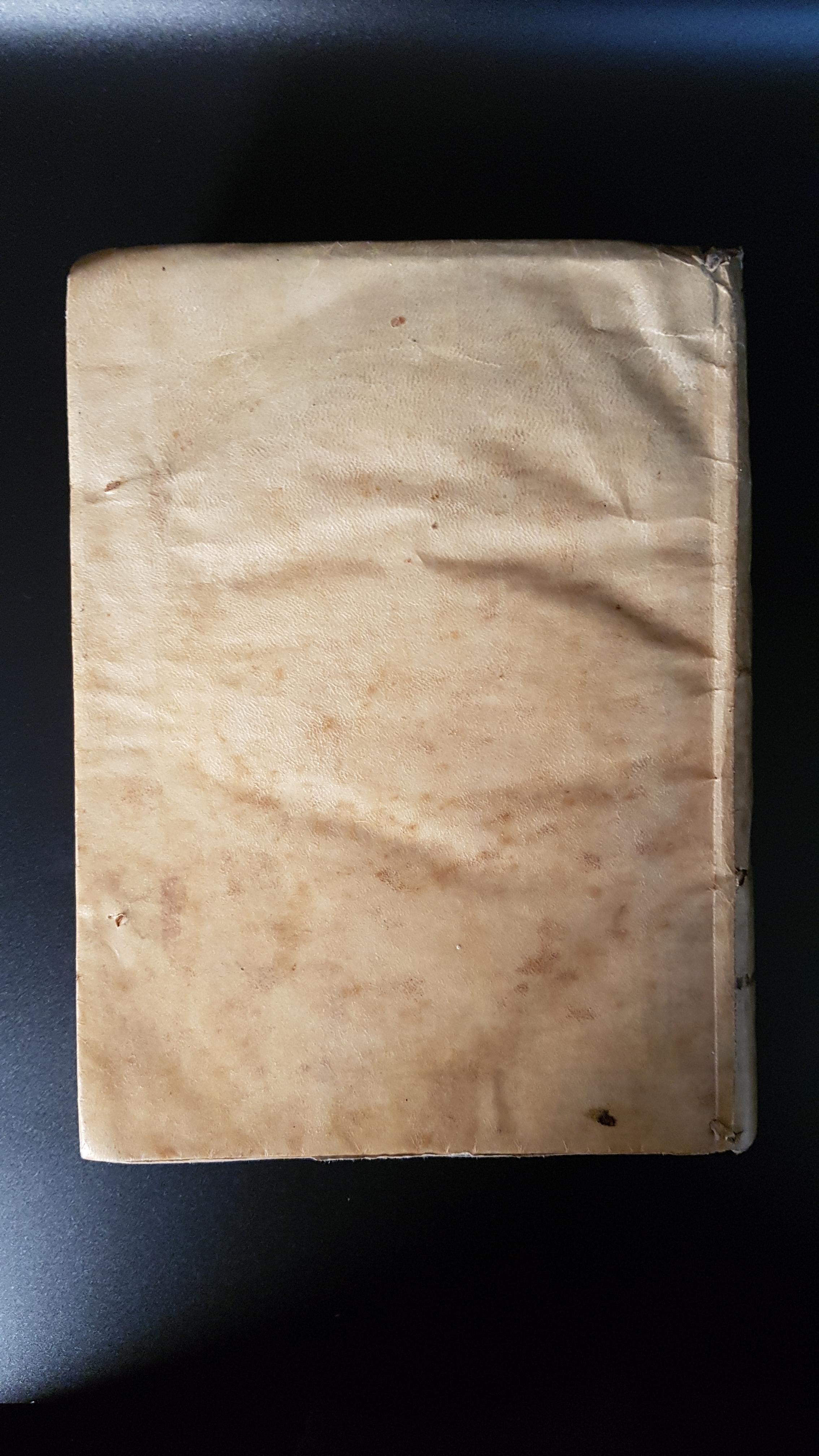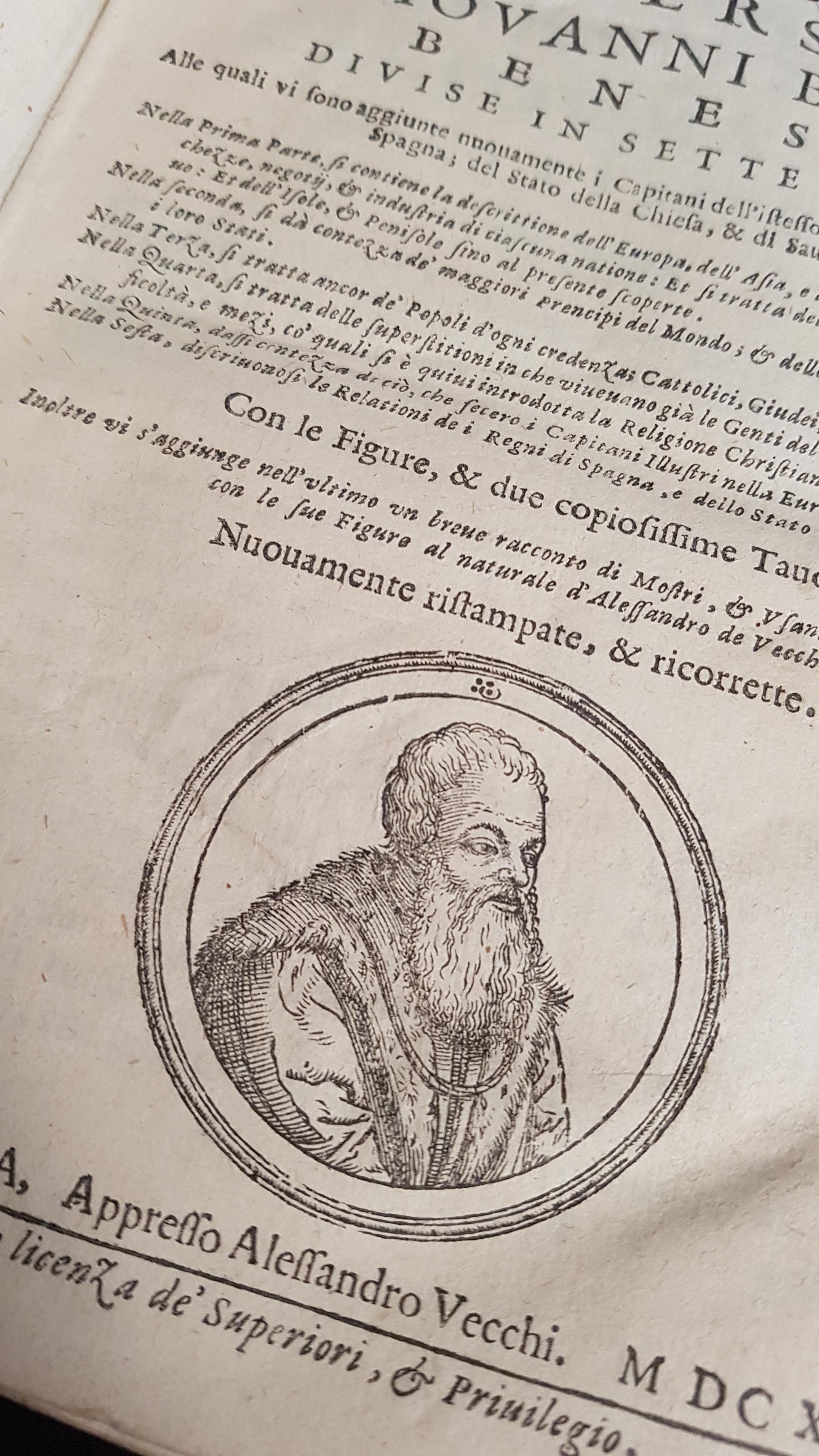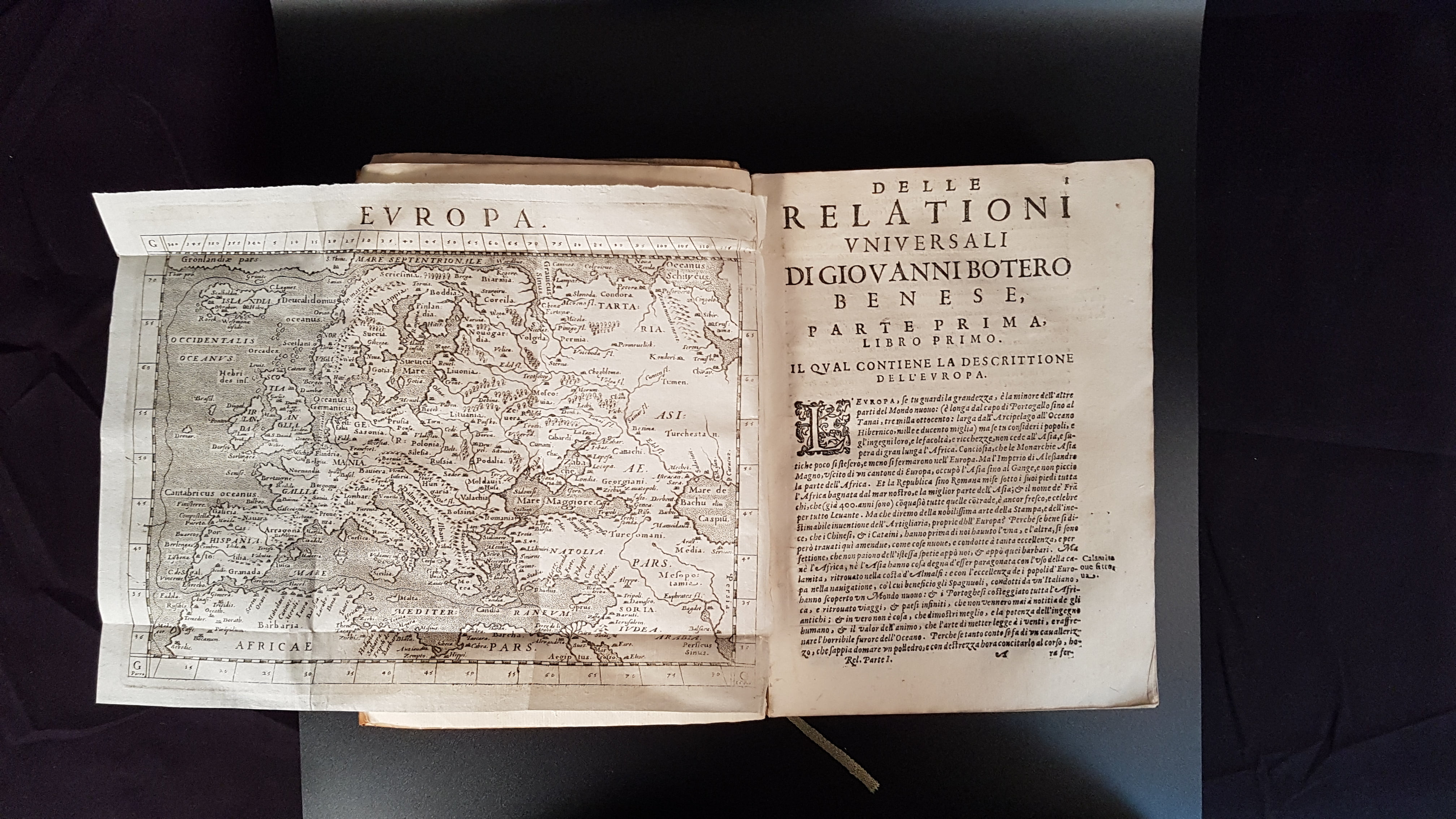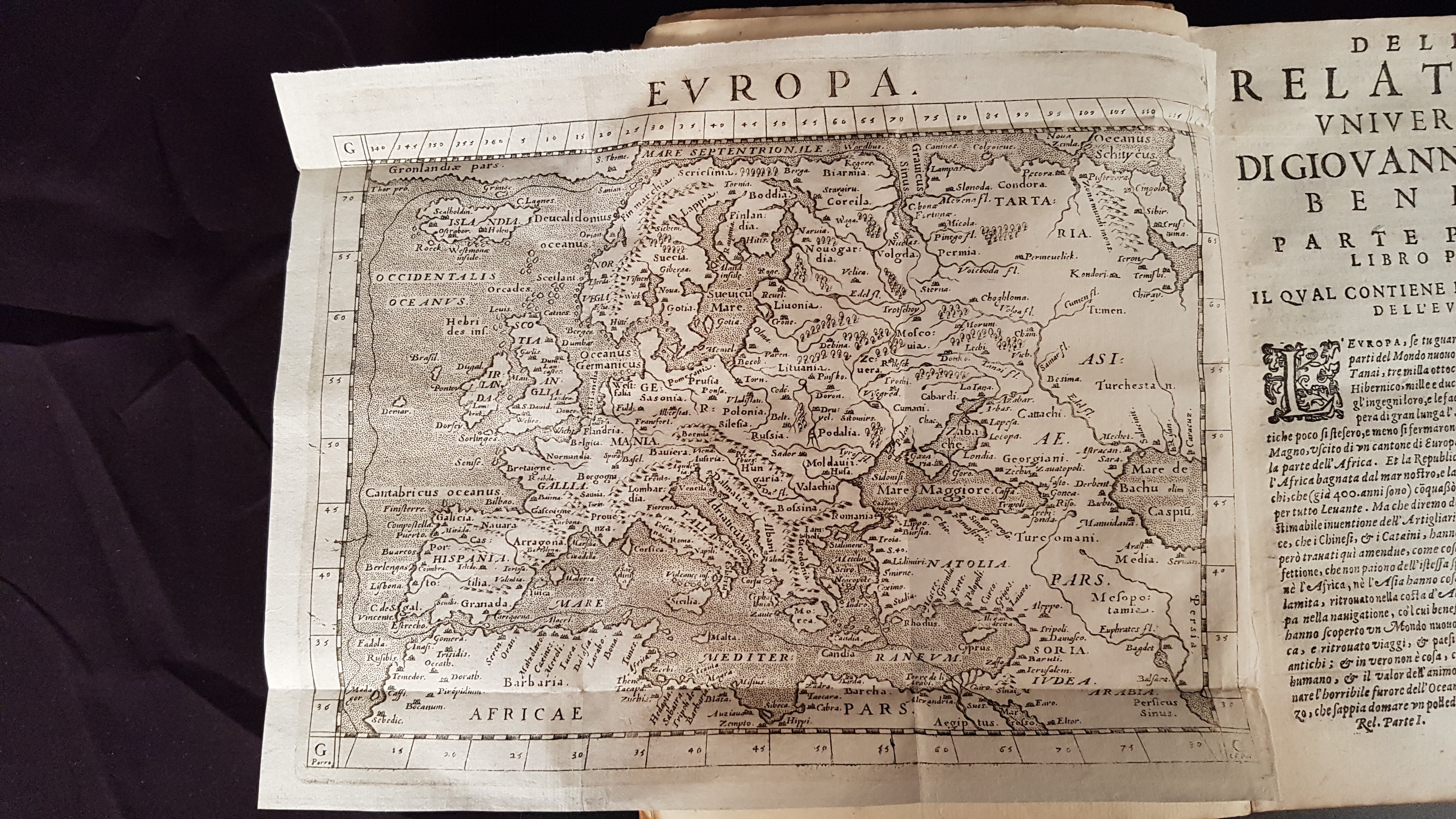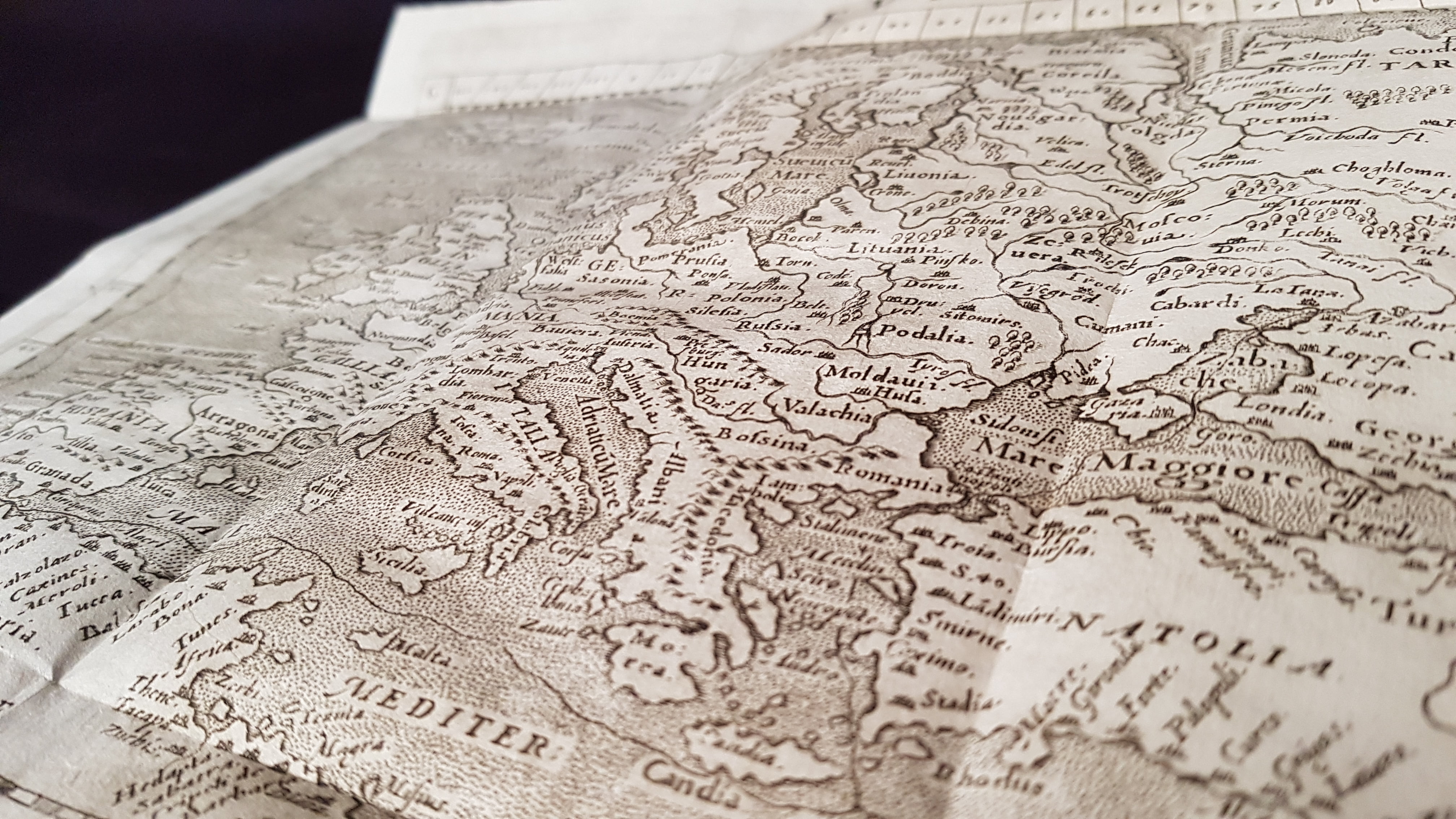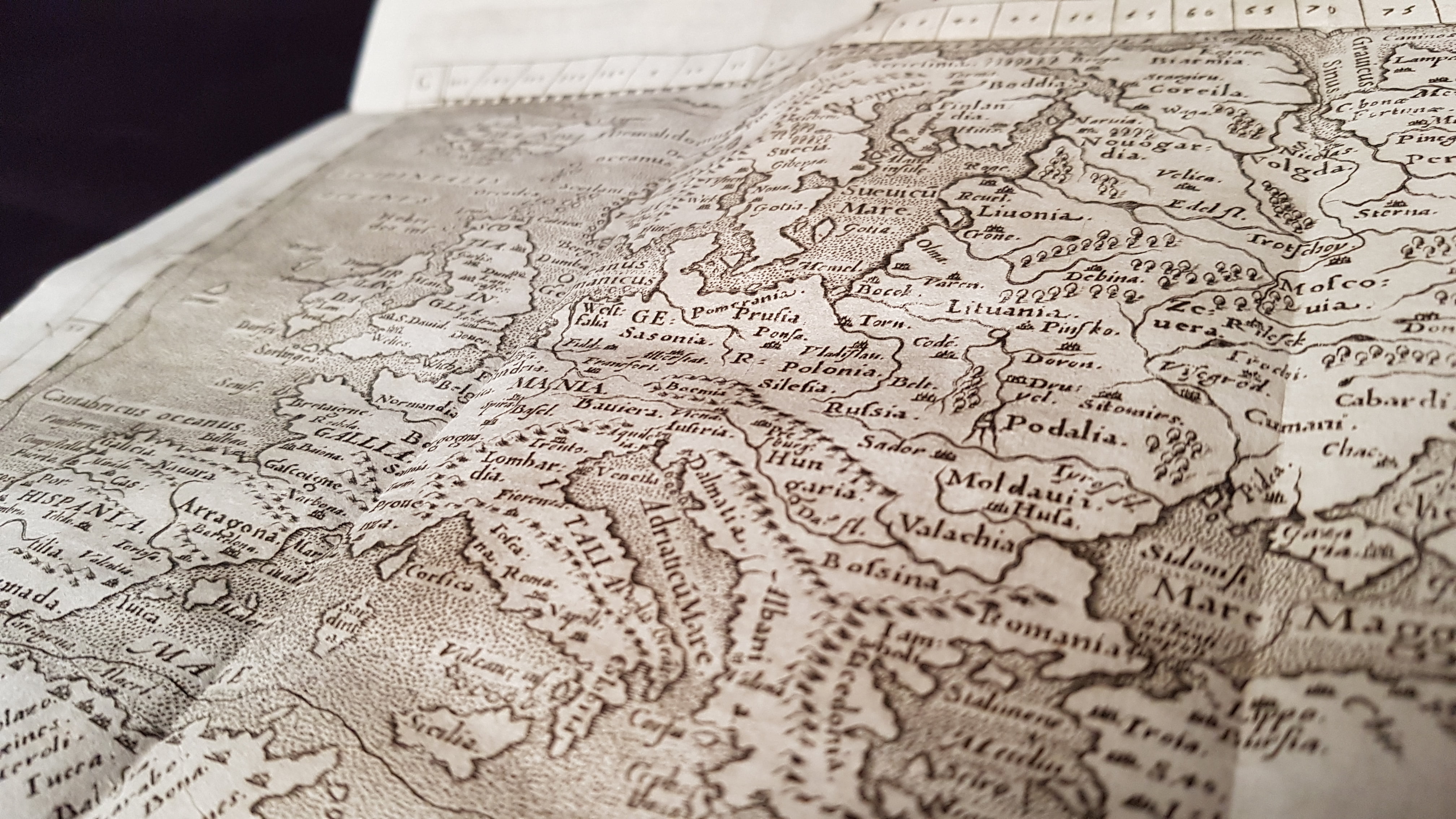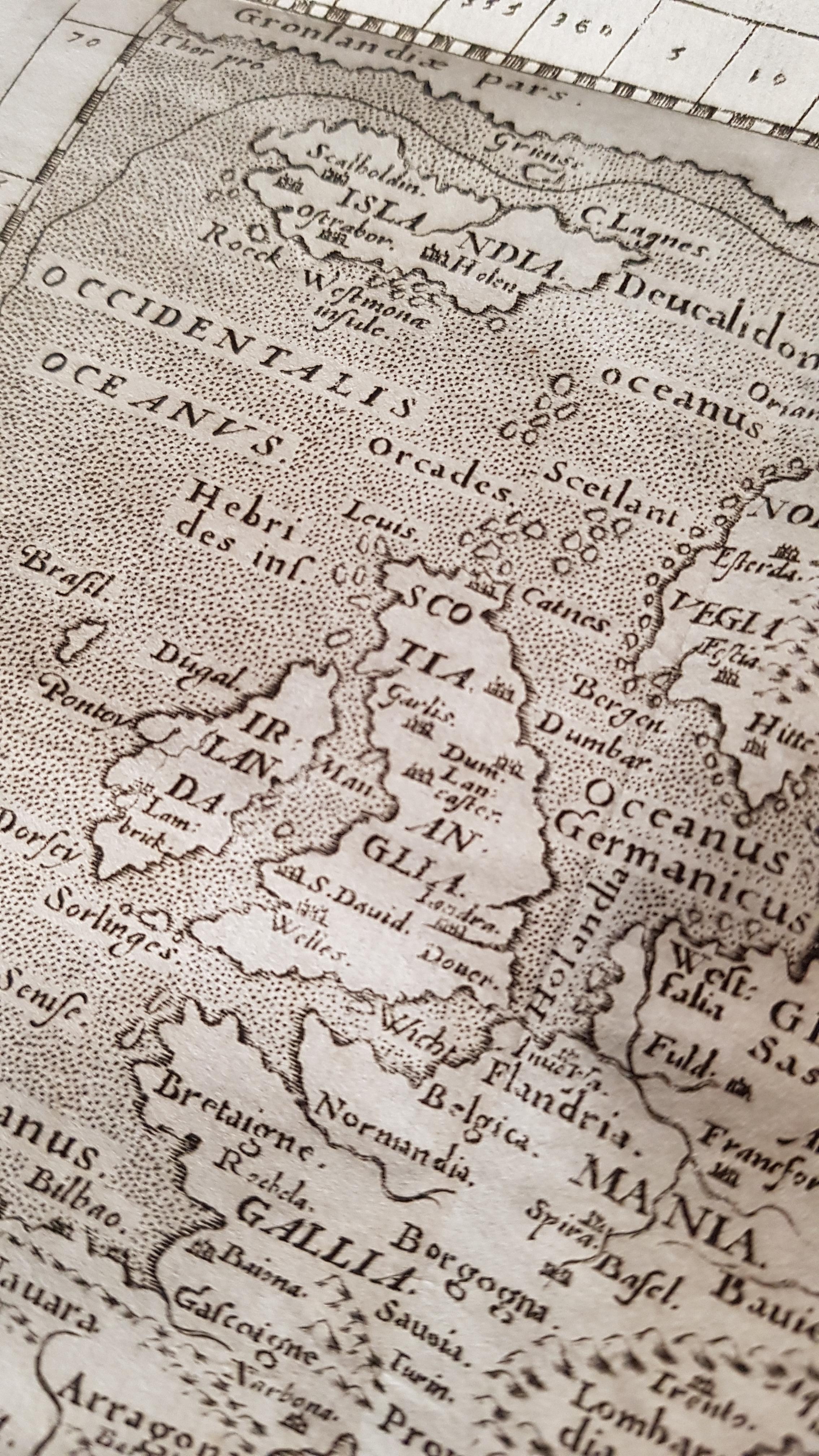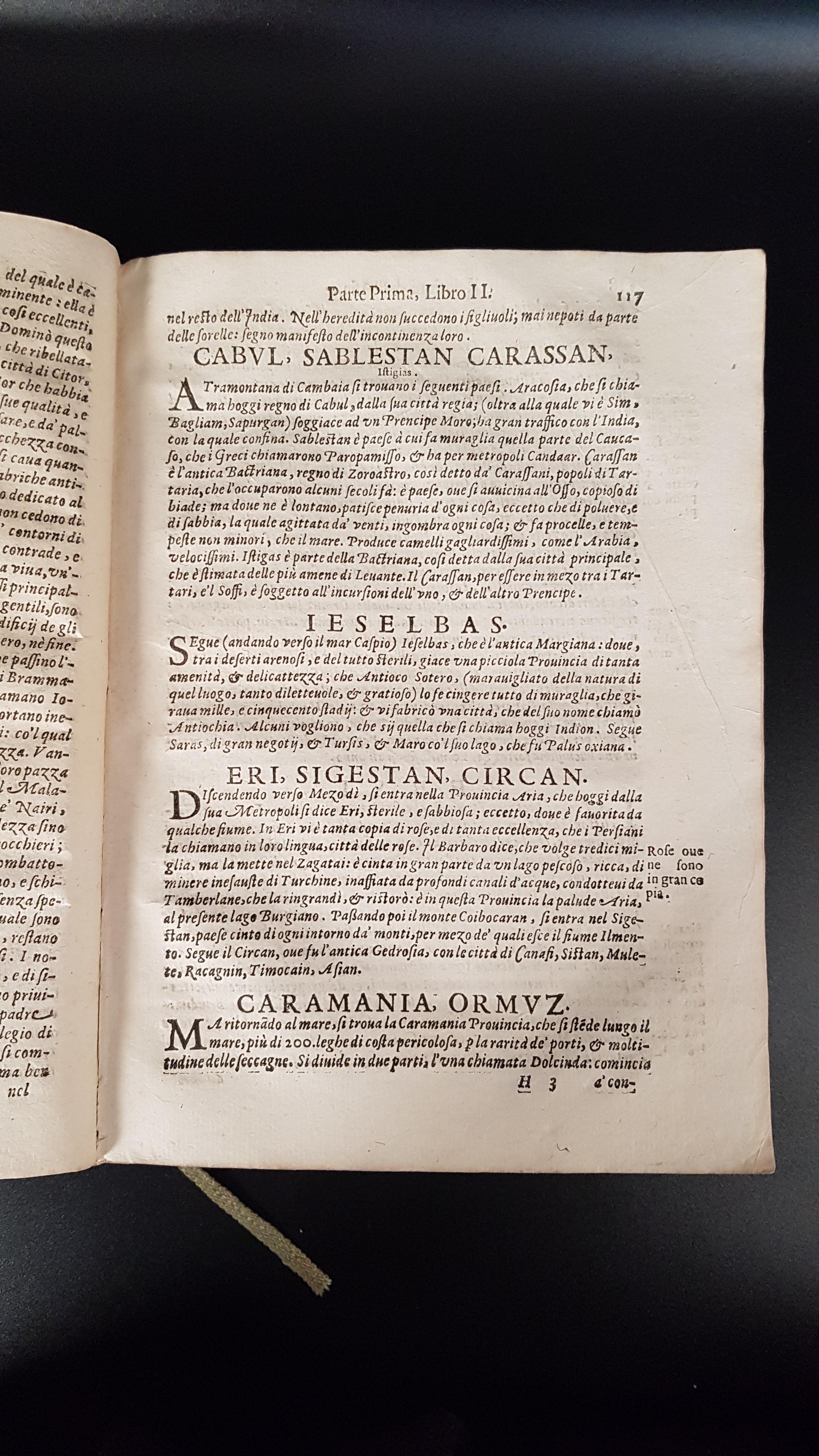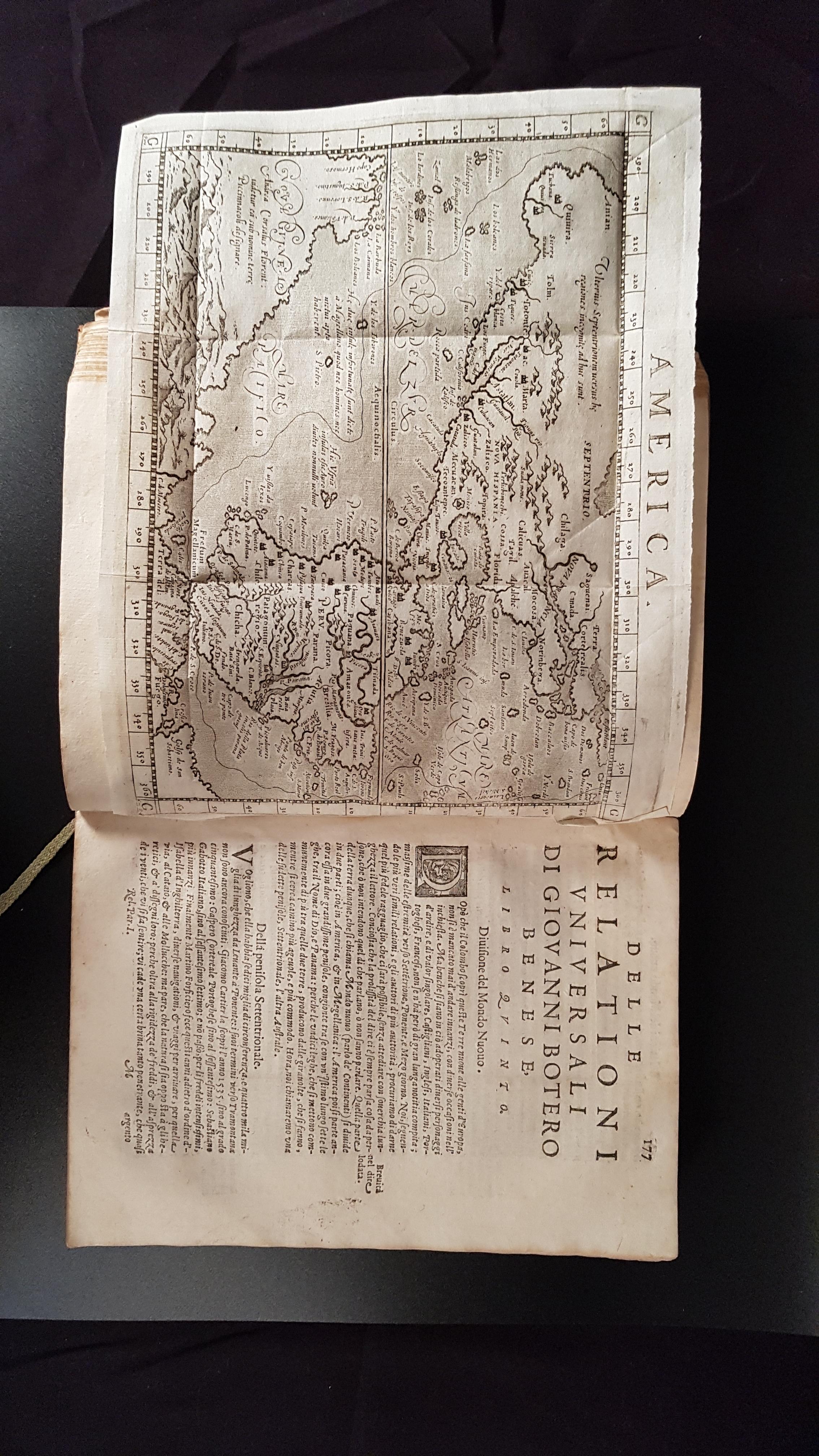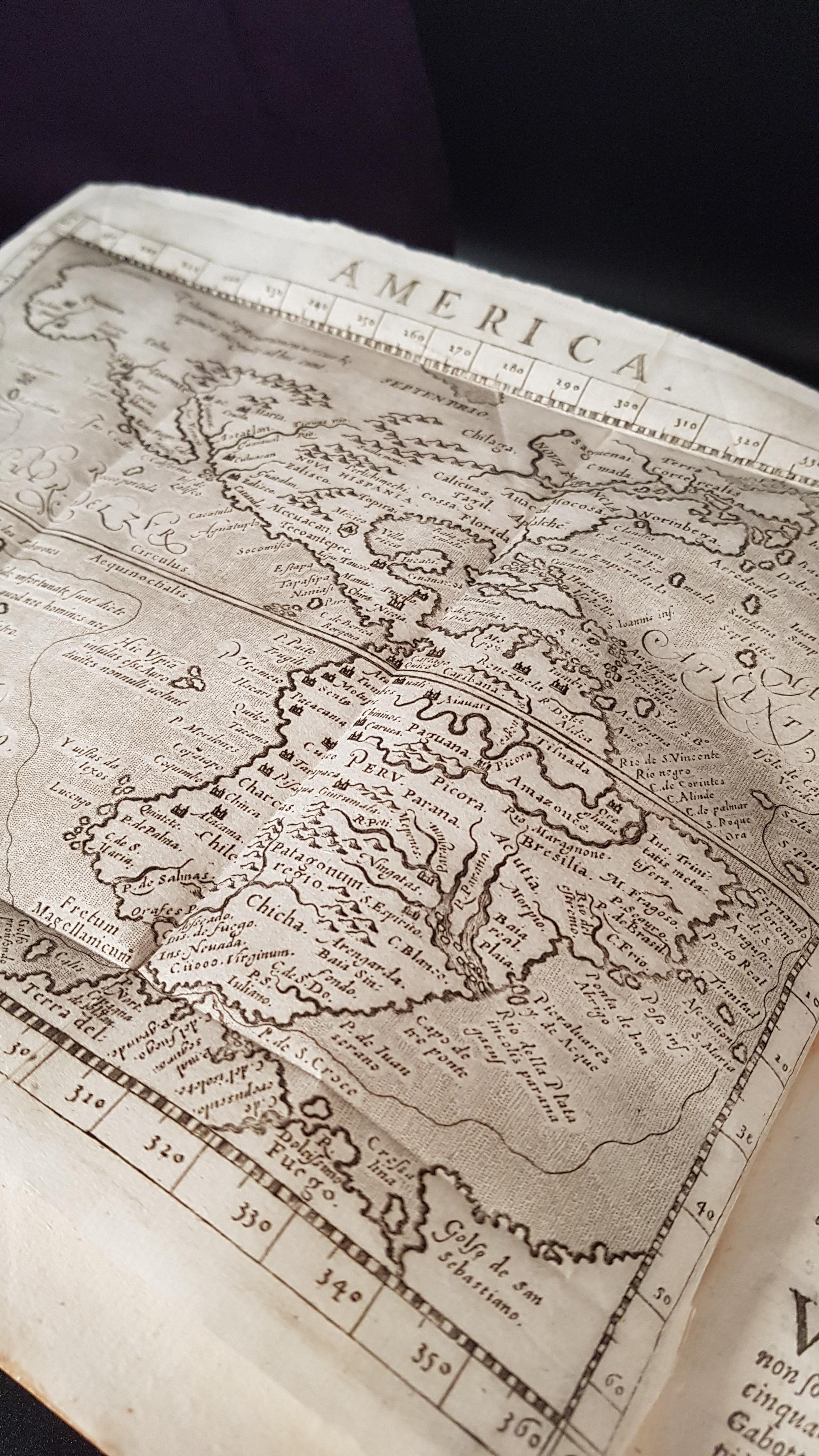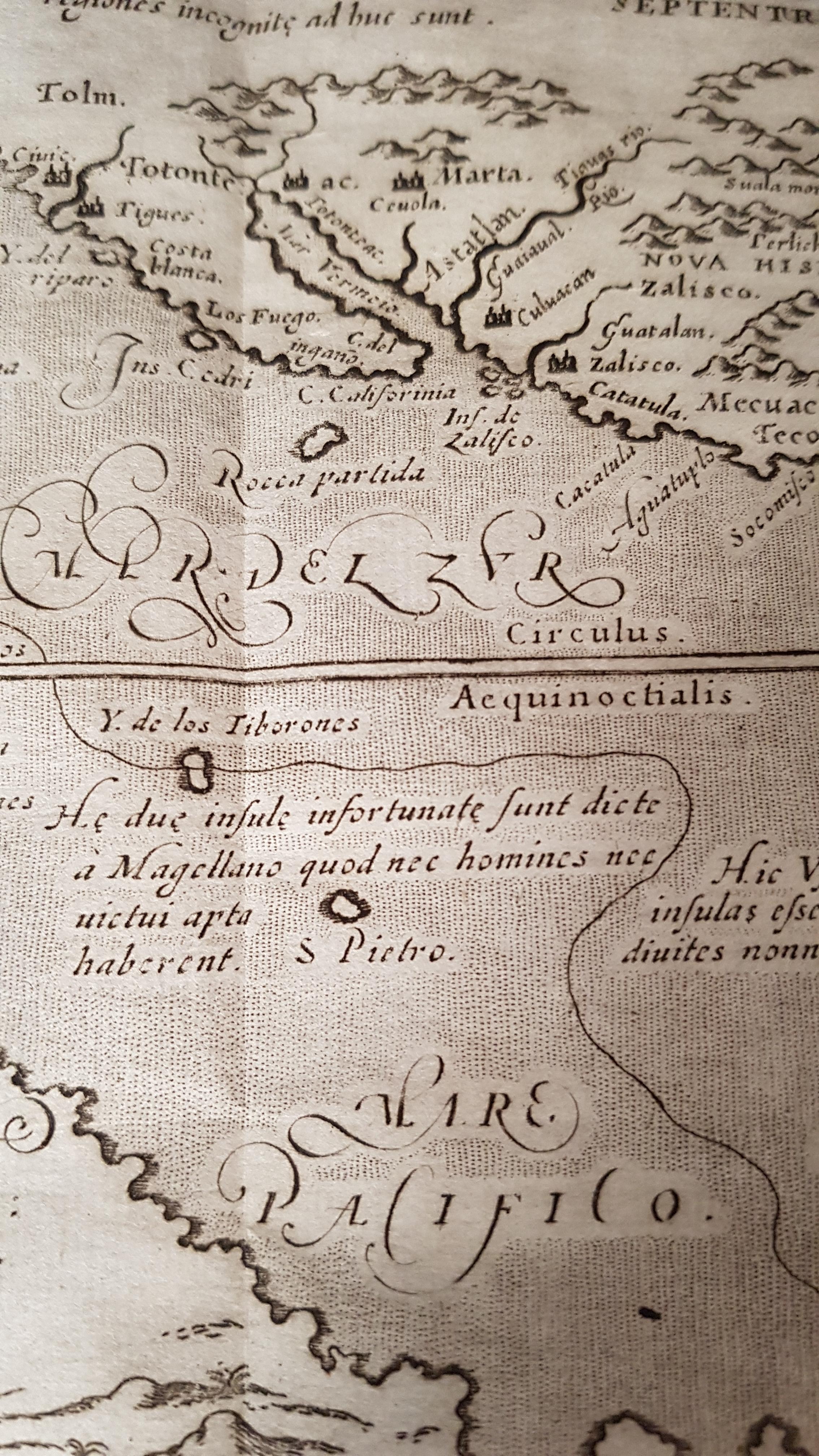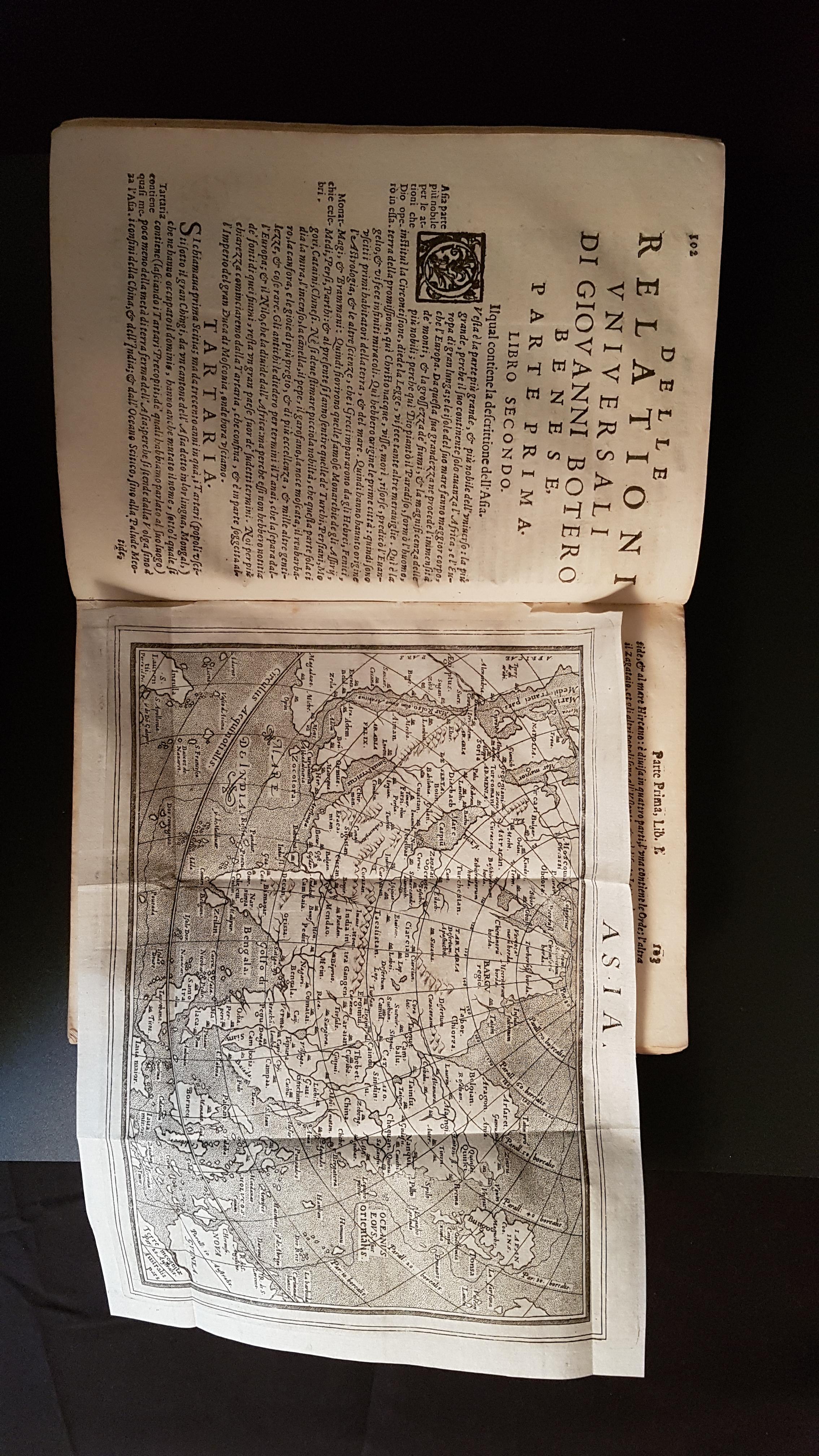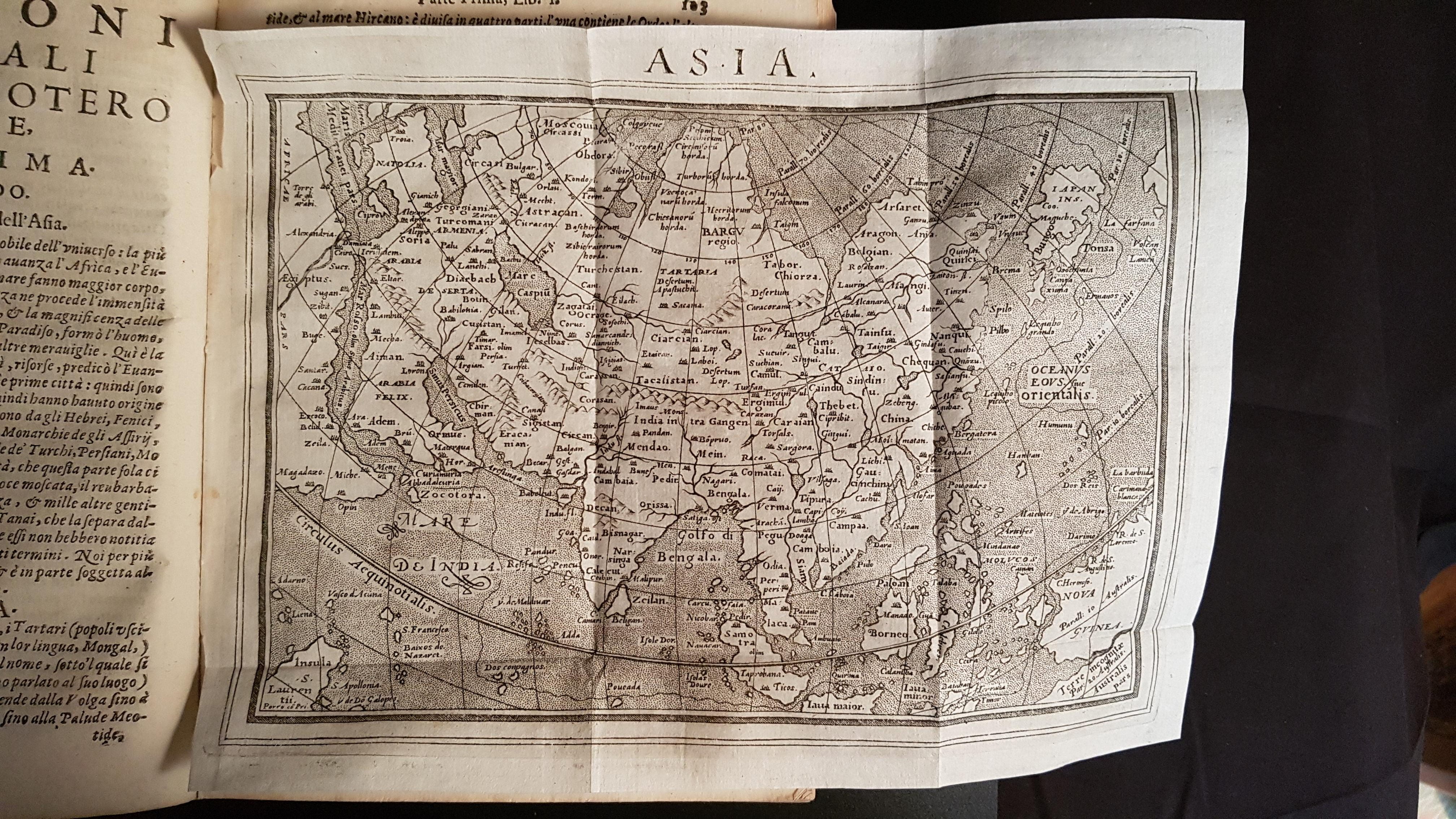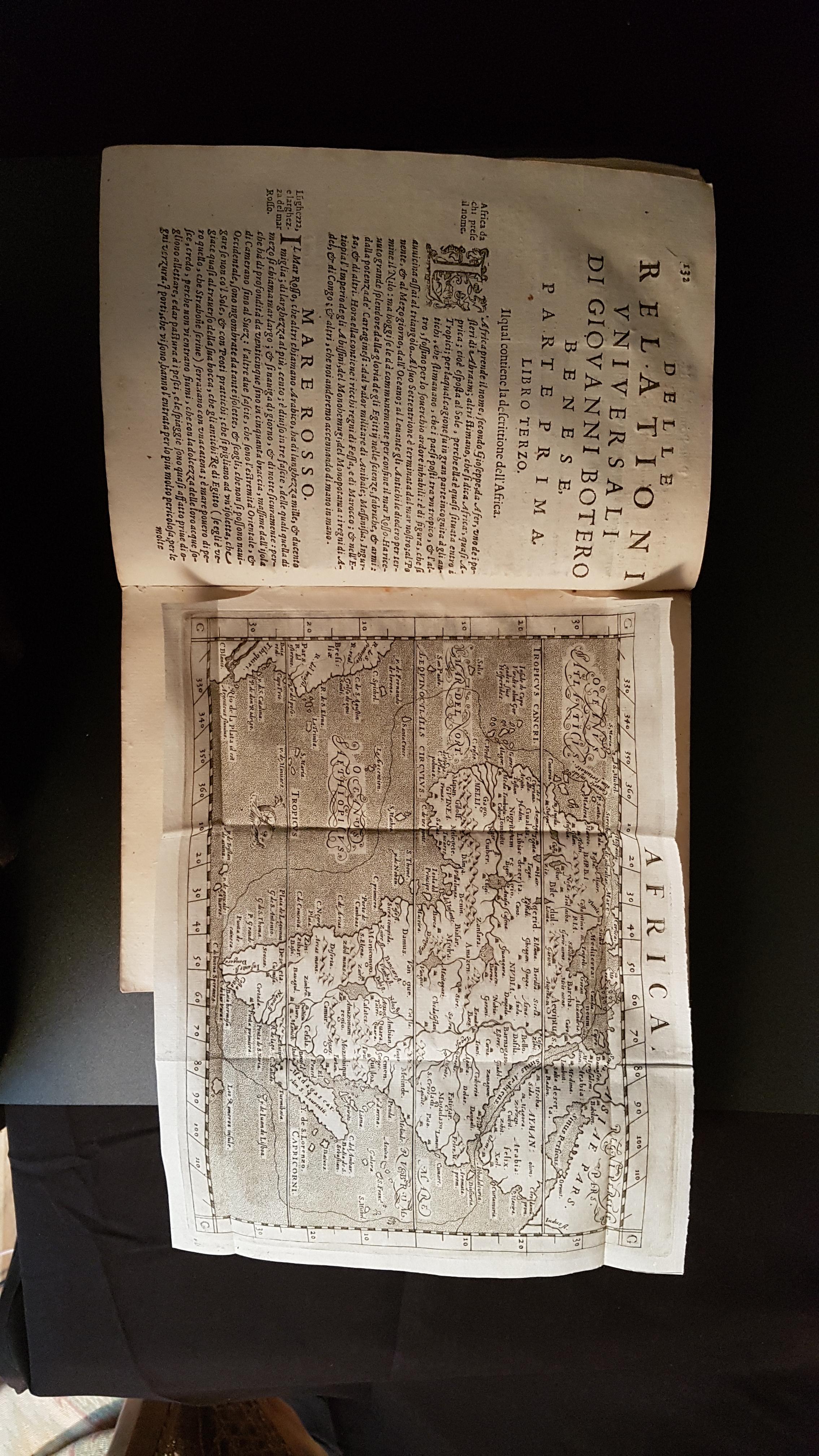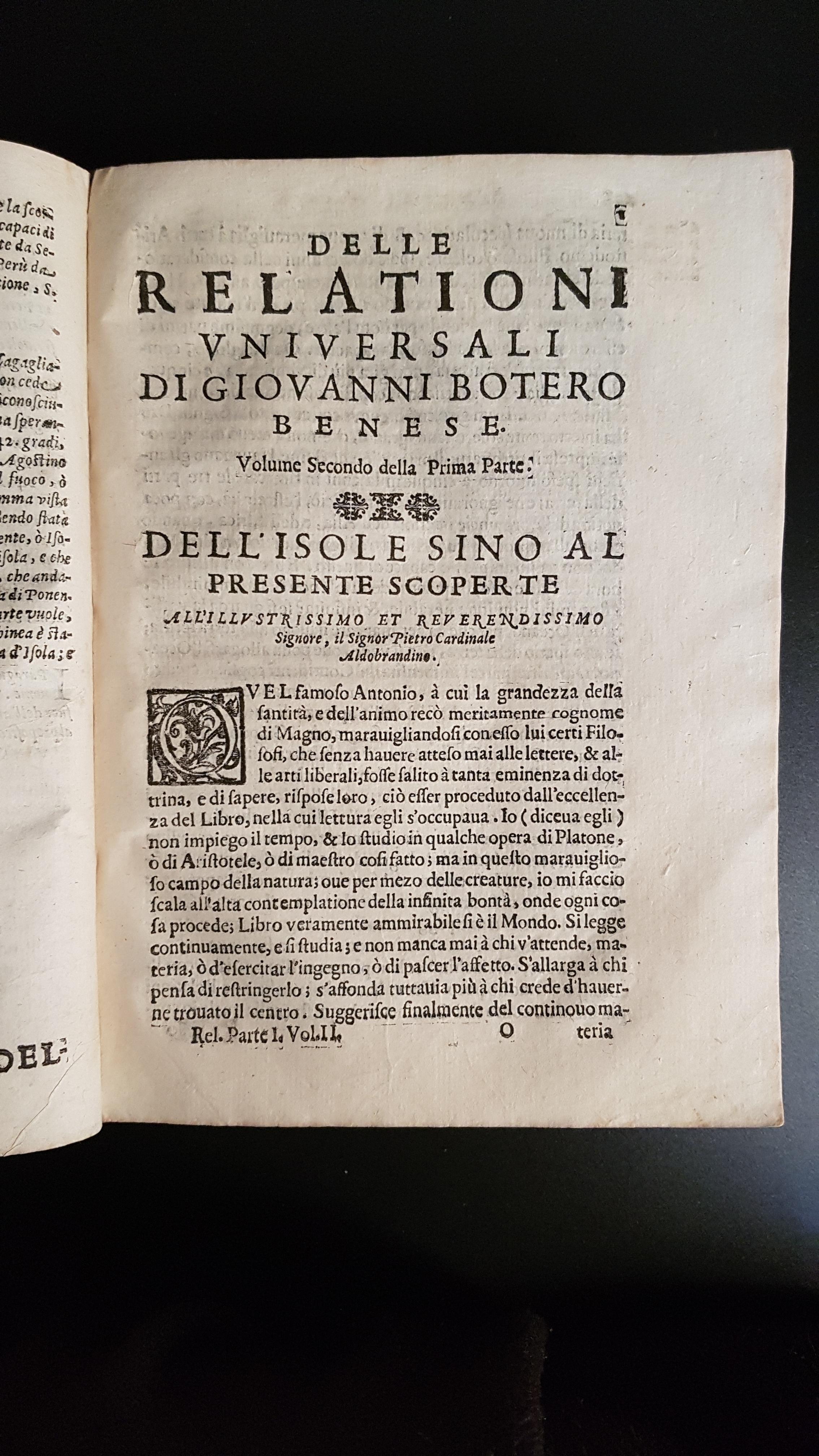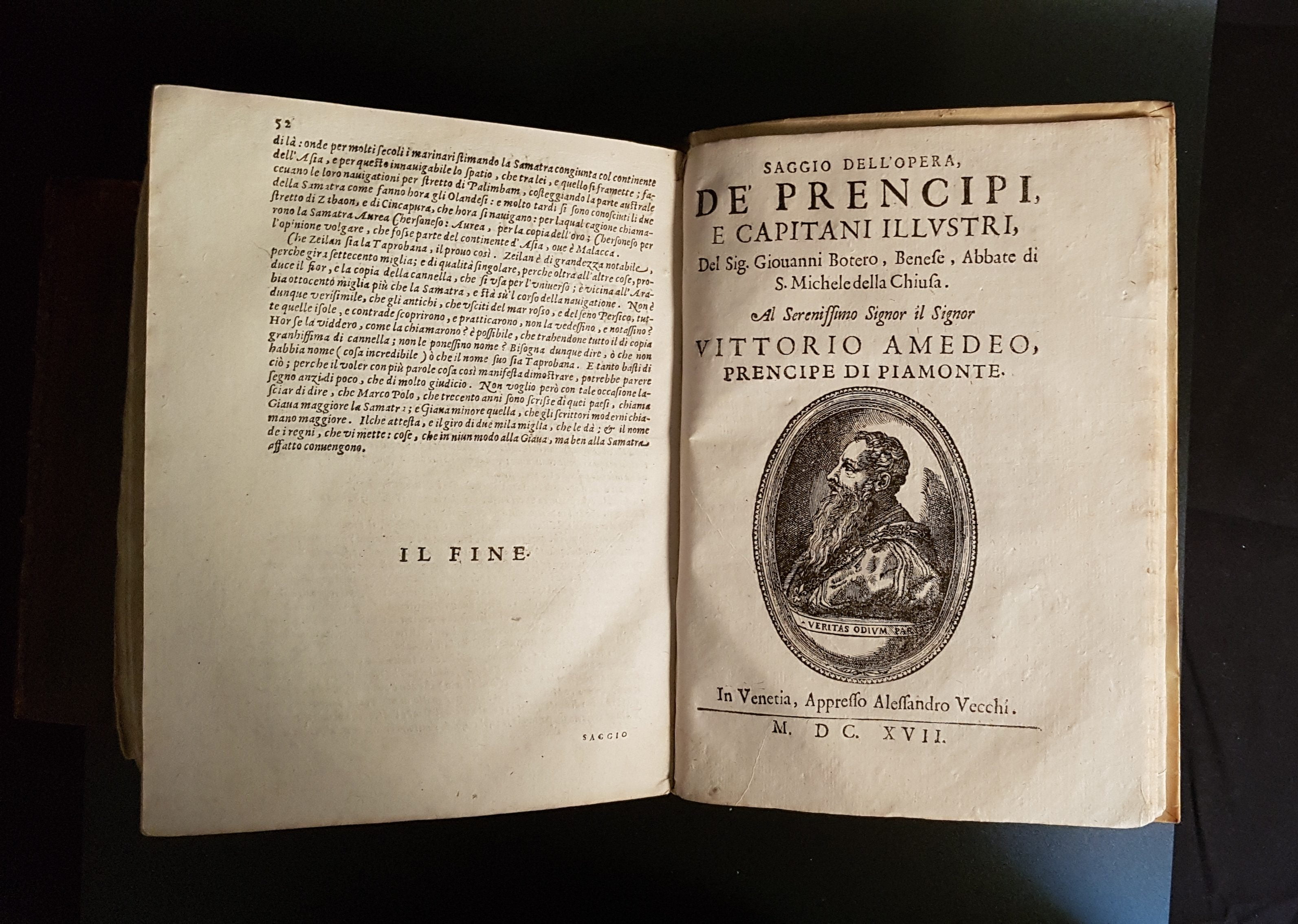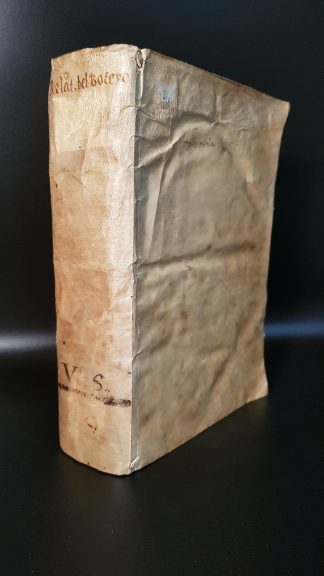BOTERO, Giovanni
STRIKINGLY ILLUSTRATED
Le relationi universali…divise in sette parti
Venice, appresso Alessandro Vecchi, 1617-18£32,500.00
4to, in 7 parts, each with separate t-p, date, pagination and register, pp. (xxxii) 208, 71 (i), (xx) 131 (i), 156 (viii), (xvi) 6, 64, (viii) 56, (viii) 52, 22 (ii). Italic letter, little Roman. Circular woodcut portrait of Botero to t-ps, 4 fold-out engraved maps of the continents, 32 superb full-page woodcuts of exotic mirabilia to part 5, decorated initials, head- and tailpieces. Very minor marginal spotting, couple of paper flaws, tiny marginal worm trail to t-p and another. A very good copy in contemporary Italian vellum, traces of ties, title inked to upper cover and spine, shelfmark to spine and fly.
Handsome, superbly illustrated copy of the enlarged edition in seven parts—the first illustrated with woodcuts of exotic wonders—of this most successful descriptive geography of the world. Educated at the Jesuit college in Palermo and Rome, Giovanni Botero (1544-1617) was a poet and political theorist. In the 1590s, at the service of Cardinal Borromeo, he wrote his ‘Relationi universali’, describing Europe, Asia, Africa, America, and their islands; the princes and kingdoms of the world; world religions; the ‘superstitions’ and evangelisation of the New World; the wonders of the Indies; European wars and famous captains. The 32 impressive woodcuts by Alessandro de Vecchi were here published for the first time, as an addition to Part 4, which ‘could also be a stand-alone work’ (Vinciana 1090). They translated exotic wonders traditionally found in Africa and Asia into the New World. De Vecchi’s figures ‘to the life’ were probably inspired by C16 illustrated German books; some resemble the wonders portrayed in the Nuremberg Chronicle (e.g., a creature with a wolf’s and human head and the sciopod). Also, like some of these works, Botero described ‘cynocaephali’ (dog-headed men) as cannibals from the Indies (Feest, ed., ‘Indians and Europe’, 20). The realistic portrayals of the natives, among the earliest, were recut after those in a long woodcut of the procession of King of Cochin by Hans Burgkmair, printed in 1508-11. Unable to become an active missionary after being expelled from the Jesuits, Botero composed this work to assist the Church in fighting heresy around the world. It was a collection of texts on the geography and history of the four Continents—with most up-to-date information on Asia—based on accounts by travellers and Jesuit missionaries. Thanks to its numerous editions and translations, it quickly became ‘a standard work of reference…both Protestant and Catholic’ (Symcox, ‘On the Causes’, xiii). Cardinal Borromeo, to whom the third part is dedicated, made ample use of the information on the Americas; in particular, Botero examined the regions of Norumberga (of legendary status), Florida, the Mexican Gulf, Mexico and South America down to Magellanica by the Antarctic Pole. He also discussed the excavation of a canal to link the two oceans through Nicaragua first planned by the early ‘conquistadores’. A masterpiece of Renaissance political geography.
BM STC C17 It., p. 139; Alden 618/20; Sabin 6806 (1602 ed.); Cordier, Bib. Sinica, 16-17; James Ford Bell B410. Not in Brunet.In stock



